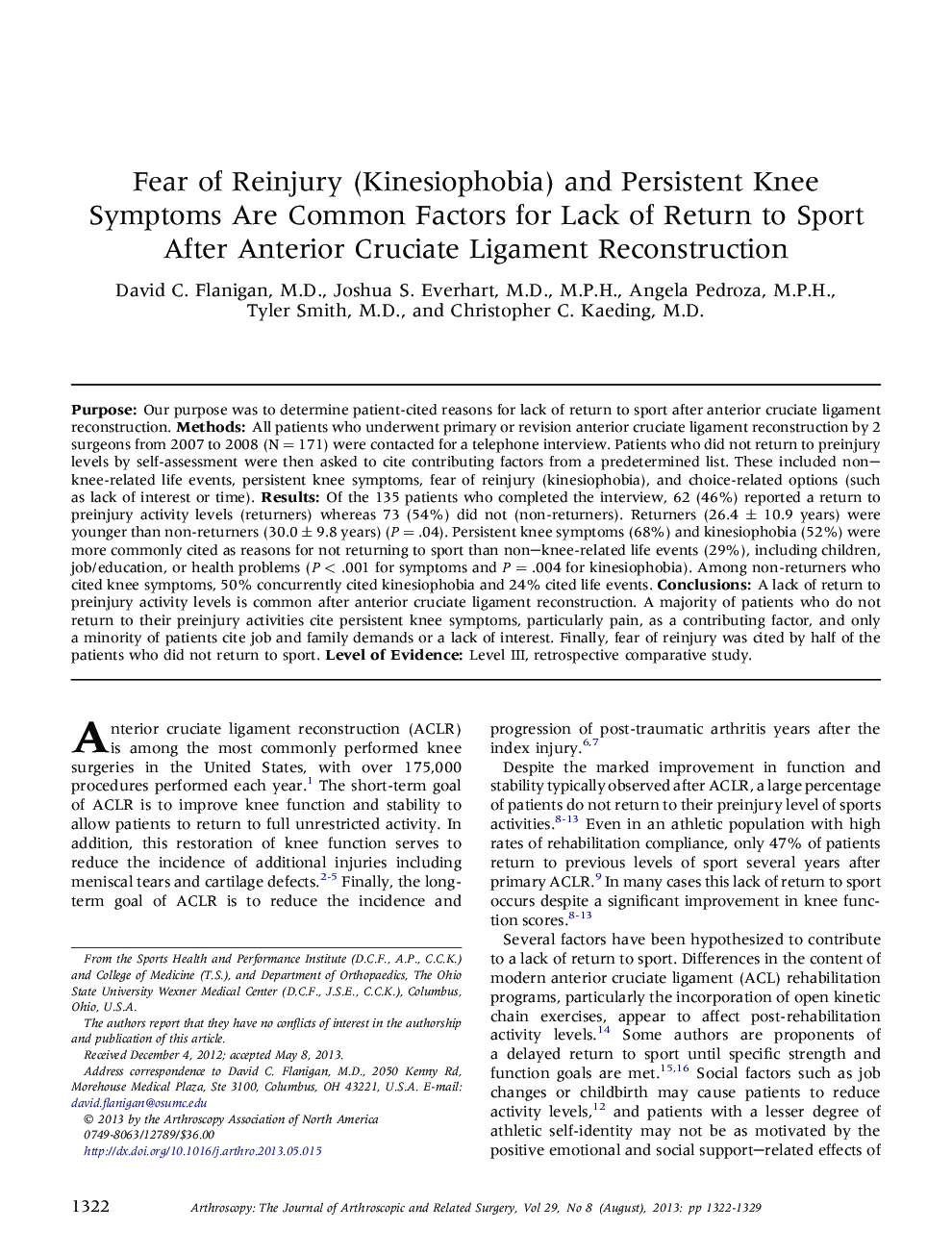| Article ID | Journal | Published Year | Pages | File Type |
|---|---|---|---|---|
| 4043884 | Arthroscopy: The Journal of Arthroscopic & Related Surgery | 2013 | 8 Pages |
PurposeOur purpose was to determine patient-cited reasons for lack of return to sport after anterior cruciate ligament reconstruction.MethodsAll patients who underwent primary or revision anterior cruciate ligament reconstruction by 2 surgeons from 2007 to 2008 (N = 171) were contacted for a telephone interview. Patients who did not return to preinjury levels by self-assessment were then asked to cite contributing factors from a predetermined list. These included non–knee-related life events, persistent knee symptoms, fear of reinjury (kinesiophobia), and choice-related options (such as lack of interest or time).ResultsOf the 135 patients who completed the interview, 62 (46%) reported a return to preinjury activity levels (returners) whereas 73 (54%) did not (non-returners). Returners (26.4 ± 10.9 years) were younger than non-returners (30.0 ± 9.8 years) (P = .04). Persistent knee symptoms (68%) and kinesiophobia (52%) were more commonly cited as reasons for not returning to sport than non–knee-related life events (29%), including children, job/education, or health problems (P < .001 for symptoms and P = .004 for kinesiophobia). Among non-returners who cited knee symptoms, 50% concurrently cited kinesiophobia and 24% cited life events.ConclusionsA lack of return to preinjury activity levels is common after anterior cruciate ligament reconstruction. A majority of patients who do not return to their preinjury activities cite persistent knee symptoms, particularly pain, as a contributing factor, and only a minority of patients cite job and family demands or a lack of interest. Finally, fear of reinjury was cited by half of the patients who did not return to sport.Level of EvidenceLevel III, retrospective comparative study.
